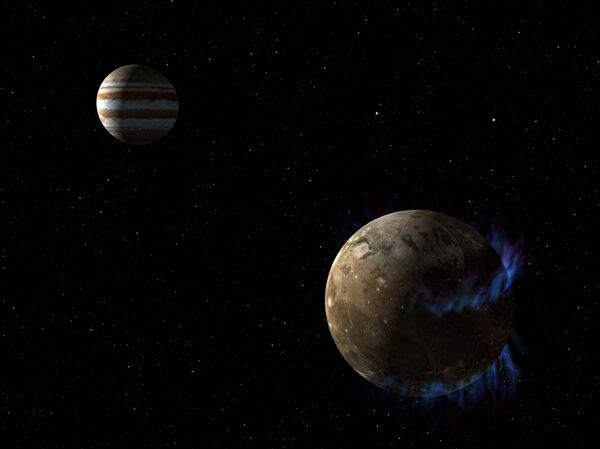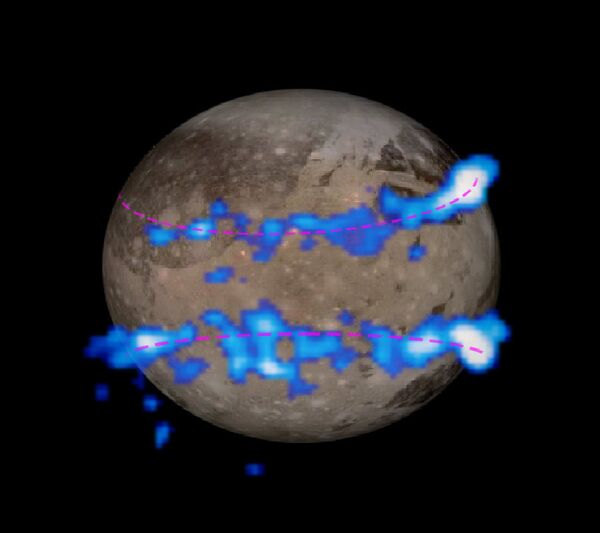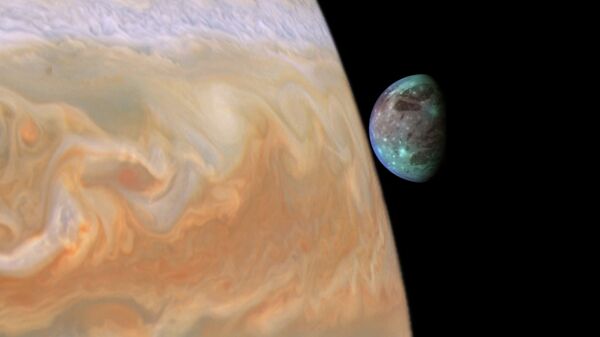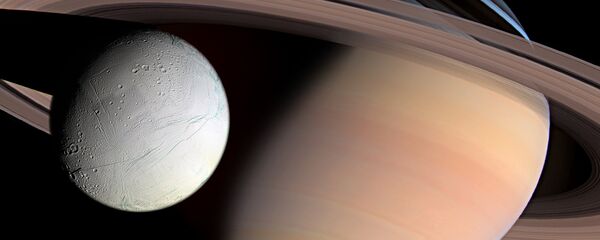Astronomers believe this subterranean ocean buried under 95 miles of ice to be about 60 miles deep — ten times deeper than Earth’s oceans.

“This discovery marks a significant milestone, highlighting what only Hubble can accomplish,” said John Grunsfeld, associate administrator of NASA’s Science Mission Directorate at NASA Headquarters in Washington. “In its 25 years in orbit, Hubble has made many scientific discoveries in our own solar system. A deep ocean under the icy crust of Ganymede opens up further exciting possibilities for life beyond Earth.”
Ganymede, the largest moon in our system, has its own magnetic field, which creates luminescent ribbons of hot electric gas called aurorae. Due to Ganymede’s close proximity to its parent planet, when Jupiter’s magnetic field changes, so do the aurorae on Ganymede, by what NASA describes as “rocking” back and forth.
A team of scientists headed by Dr. Joachim Saur of the University of Cologne in Germany came up with the idea of observing the aurorae to determine what’s beneath Ganymede’s surface.
"I was always brainstorming how we could use a telescope in other ways," said Saur. "Is there a way you could use a telescope to look inside a planetary body? Then I thought, the aurorae! Because aurorae are controlled by the magnetic field, if you observe the aurorae in an appropriate way, you learn something about the magnetic field. If you know the magnetic field, then you know something about the moon’s interior."
Researchers posited that if saltwater were present, Jupiter’s magnetic field would create a second field to counter the first. This so-called “magnetic friction” would suppress the rocking of the aurorae. The saltwater ocean would fight the field, reducing the rocking of the aurorae to 2 degrees instead of 6.

Researchers began to speculate about the possibility of an ocean beneath the surface of Ganymede in the 1970s, based on models of the moon. In 2002, NASA’s Galileo spacecraft mission measured the magnetic field and provided the first observational evidence of the subterranean liquid, but it was not enough to confirm the existence of an ocean.
Scientists have already confirmed the existence of an ocean on Europa, another of Jupiter’s moons. NASA has plans to send an unmanned mission there to look for the alien life that might come with it, the Washington Post reported.




